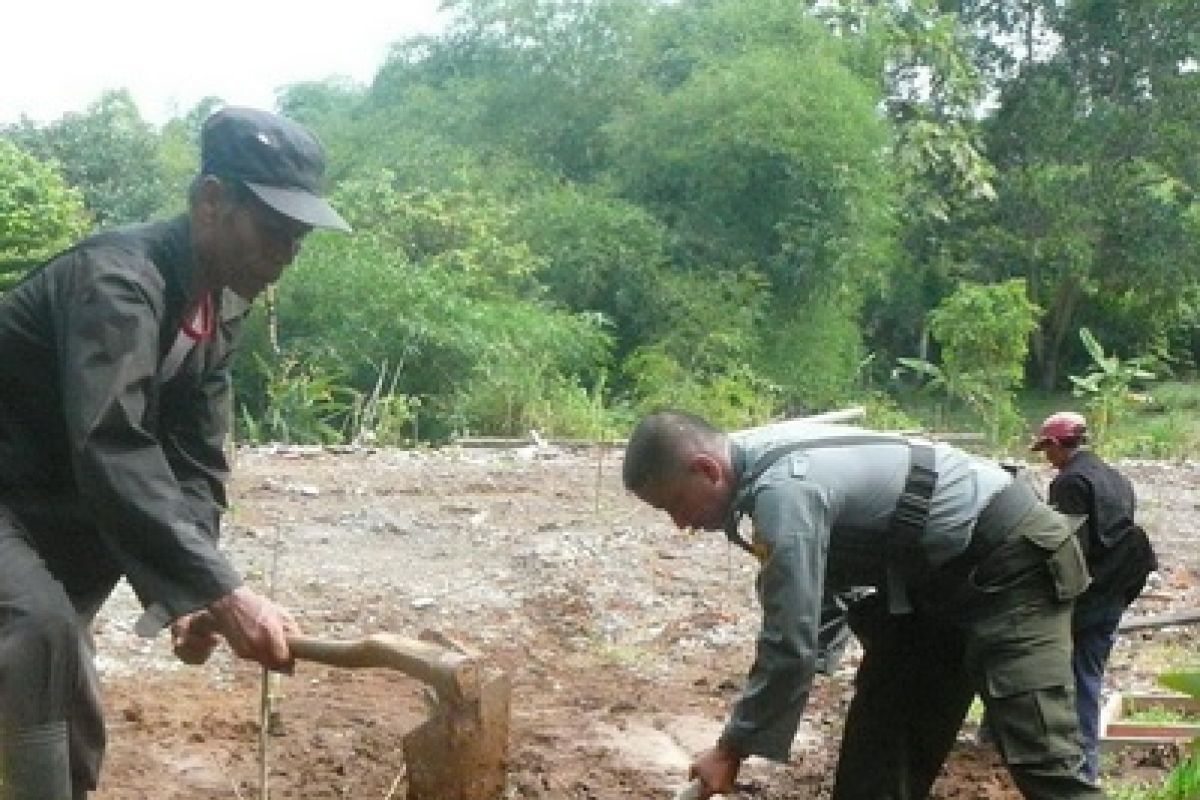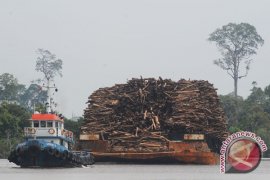"I believe 90 percent of the 1.7 billion trees will grow. We have set ourselves the target of planting at least 1.7 billion trees this year. Hopefully, the number of trees that can grow will be far higher than last year," Forestry Minister Zulkifli Hasan said.
As part of its efforts to cut its gas emissions by 26 percent in 2020, the Indonesian government since 2007 has been launching a tree planting drive to rehabilitate its damaged forests, green its denuded lands and provide homes to billions of tons of carbon sinks.
Indonesia has designated 37.5 million hectares of its 130 million hectares of forests as homes for carbon sinks as part of its emission reduction project through the global Reduction of Emissions from Deforestation in Developing Countries (REDD) scheme.
A total of 40 million hectares are former production forests, half of which have been damaged or are in critical condition. The damaged forests are expected to be rehabilitated with consistent and continued tree planting programs.
Like in 2010, this year`s planting target is also set at 1.7 billion trees. "The target is the same as last year in which 90 percent of the number would grow," Minister Zulkifli Hasan said on Wednesday.
Right now the country had 1.7 billion seeds consisting of 600 million from the ministry, 500 million from state forestry companies and 600 million from timber estate companies.
For this program, the forestry ministry set aside a fund of Rp3 trillion. The planting of trees in the 1,7 billion tree planting program was started on February 1, 2011 and would be completed on January 31, 2012.
However, the number of trees that have been planted this year is still unknown as the project is still going on. By January 31, 2011 the number of trees planted under the 2010 reforestation program had exceeded the annual target of 1 billion trees, he said.
According to the minister each of the trees planted is able to absorb 28 tons of carbon gases per annum. Thus, if the 1.7 billion trees are successfully planted and grown they will be able to serve as home to 47.6 billion tons of carbon sinks.
"One tree is able to absorb 28 tons of CO2 gas and hold 100 liters of water a year," the minister said.
The planting of trees is also crucial to human beings who breathe 10 tons of oxygen for free per annum and use about 10 liters of water a day, Minister Zulkifli said.
He said that each person should at least plant trees at a rate equal to the span of his or her life. "So, if a person has a span of life of 60 years, he or she had better plant at least 60 trees," he said.
The minister said he tirelessly reminded the people of the importance of tree planting movement in the frame work of preventing the emergence of critical environment and of creating the image of Indonesia Green.
Therefore, he also asked the people to pay attention to the critical environment in their surroundings which were marked by the absence of birds and butterflies or fireflies which were used to be found around the house.
He said that these animals had high sensitivities to the various conditions of living environment such as high pollution, water contamination and scarcity of trees. Butterflies and fireflies could only live in an environment which had a perfect ecosystem.
Regarding forest fires in the current drought which begins to trigger forest fires minister Zulkifli called on the people to change their habit of burning in opening up farmland that could boost land and forest fire.
"Some farmers burn their agricultural land when they begin to open up farms and burn them again when they finish tilling them. This habit must be terminated," the minister said during a function on the planting program of one billion trees.
Director General for Forest Protection and Nature Conservation (PHKA) Darori said that the number of hot spots in Indonesia at present reached 8,082, but this was categorically small if compared with those in Myanmar and other ASEAN countries.
He said that hot spots in Myanmar were recorded at 24,767, Cambodia 12,557, Laos 11,076 and Thailand 10,031 hot spots. Hot spots in Indonesia are still found in six provinces which are prone to fires. The number of hot spot is the highest in Riau with 2.59 locations, West Kalimantan 809, North Sumatra 600, Central Kalimantan 543, Jambi 455 and South Kalimantan 259.
In order to put up forest fires, the government has sent a forest fire operation team to South Sumatra, Riau and Central Kalimantan provinces. "The forest fire operation team will be working for three months," People`s Welfare Coordinating Minister Agung Laksono said when he saw of the departure of the team at Halim Perdanakusuma airport recently.
The government and the National Disaster Mitigation Agency are working out an integrated action plan (RAT) on the handling of haze as a result of forest and land fires. The ministries of forestry, environment, agriculture and other relevant institutions have worked out programs to reduce the risks of land and forest fires, he said.
"Land and forest fires are main threat to Indonesia, particularly during the dry season. Forest and land fires caused different kinds of losses," Agung said.
The Agency for Assessment and Application of Technology (BPPT) also continues to carry out researches and technology development in order to overcome land and forest fires. It is designing a weather modification technology (TMC), a man-made rain aimed at helping overcome water crisis caused by climate and weather factors.
(T.A014/HAJM/O001)
Reporter: by Andi Abdussalam
Editor: Priyambodo RH
Copyright © ANTARA 2011











